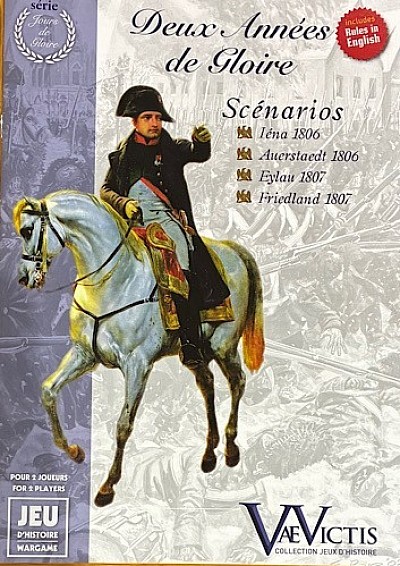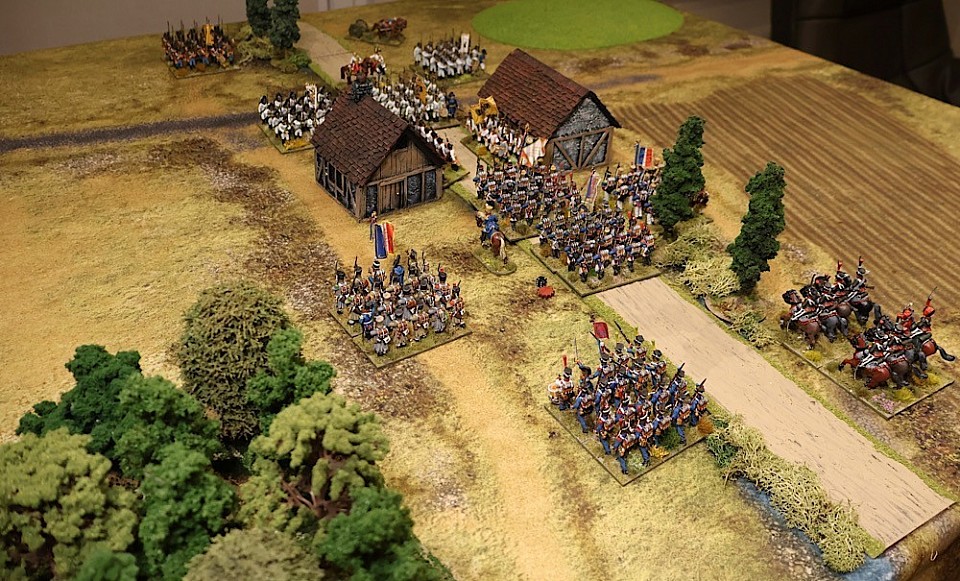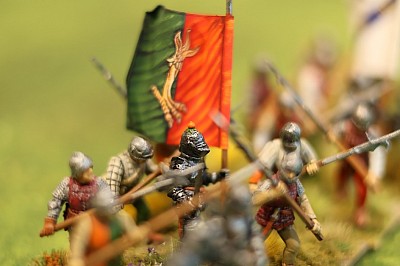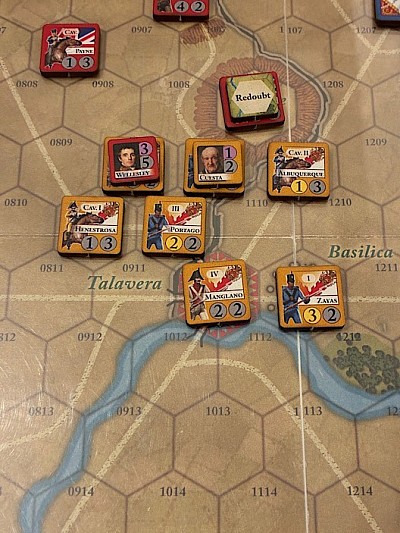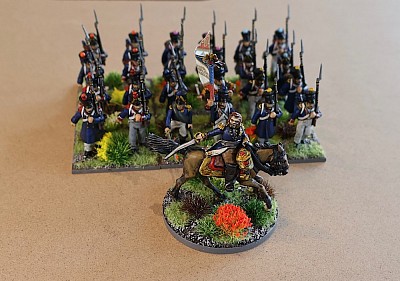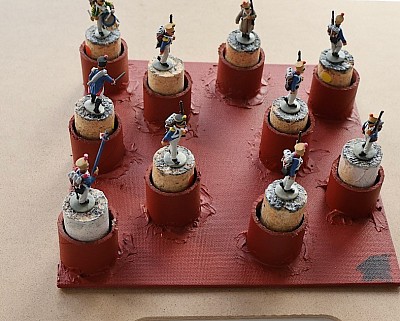Dear Diary - a rolling 4 months of comment
Battle of the Bulge 1944
As the 16th December comes around, thoughts settle upon an Anniversary game for the Ardennes campaign.
I did this a few years ago with the boardgame Bitter Woods. Each turn represented one day, so I played one turn each day to sort of play it in real time. I started a blog thread over on the Warriors & Battlefields Blog and at the end of each day, I update the blog post with news of the latest fighting.
The idea being that as the blog post was being written, I didn't know what was going to happen next and over time a campaign narrative revealed itself. I have put a link to that post down below.
This year, I am going to throw down ‘The Bulge’ a boardgame from issue 3 of the ‘World at War’ magazine from Decision Games, a design by Ty Bomba, which is itself an update on the old SPI title Big Red One. Ty Bomba has brought some new things into play, such as BloodBath results on the CRT, though interestingly, Decision Games reprinted this in a box format and returned the design to its original rule set.
There are so many Bulge games that the question of ‘What is the difference here?’ might be asked.
Well here, motorised movement on roads is exceptionally efficient, allowing the Germans to potentially travel a long way along the road with German motorised units. They can win a Sudden Death victor just by finding a weak / uncovered part of the road net and exiting the board … the question of the unit being in supply at the point of exit is a non-issue here, unusual for Bulge games. So the Allies with their preciously low number of units must ensure that all potential routes and junctions are always covered, something that needs a lot of attention in the early part of the game.
By emphasising breakthrough and breakthrough prevention, the game puts the respective mindset of the players more firmly in their historical perspectives
The Campaign Game AAR for Bitter Woods;
LINK
https://battlefieldswarriors.blogspot.com/2018/12/battle-of-bulge-1944.html
A blast from the past
Having set up the table for a Wars of the Roses game, intending to use the ‘On Bloody Ground’ rules, I had a quick pre-read and didn’t fancy it. I couldn’t be bothered doing the conversion for my multi-based units to record single casualty removal. So defaulted back to Hail Caesar, but on picking that up, I couldn’t be bothered trying to make my large basing system work with the new ‘Household’ unit configuration rules.
Why the lethargy? It turns out that I was just a couple of hours away from developing what has now become a full-blown cold .... the Lurgy, but at least not the dreaded Lurgy (Flu), which apparently is rampant this year.
Now, I'm certainly not moaning about having a cold, but it is interesting to see that a bit of dopey brain can provide a line in the sand between which rules are easier than others to implement and where those faultlines might be, in this case, the visual translation of what is intuitive and what is not - a lesson for rule writing perhaps.
Anyway, every cloud has a silver lining and all of that .... with the table set, I pulled out an old set of homebrew rules that I had written more than 30 years ago and they gave me a delightful game. A bit bare bones, but very enjoyable.
A nice touch was when Brackenbury's struggling cavalry (heavy casualties from bowmen) forced Sir Edward Stanley to flee the table, but Brackenbury's cavalry failed their morale test and went on a full-pelt pursuit not to be seen again during the rest of the game!
The rules blend the concept of the individual units doing the fighting, but with results feeding into the viability of the parent formation (the ward or wing) as a whole and are at the fast play / simple end of things - which I like! Though at the moment I think the 'Formation Block' is too tightly bound.
Quite a few examples of things not being explained properly or ideas not being fully developed cropped up, but obvious fixes occurred during play, enough that these rules might become a 2026 project to get them jacked up and fully functioning.
The core ideas seem fine, but the rules had been specifically developed to service a Bosworth scenario, so they just need to be broadened to give better period coverage and an improved explanation of mechanics, likely at the cost say of a 25 - 33% growth in wordage / volume and to include some supporting illustration.
It will probably be worthwhile to design a very ‘unlike Bosworth’ scenario, such as a themed First Albans, as a test bed that would create new situations to better stretch and test the rules, while also making them a better fit for some of the situations that crop up in my Piggy Longton ImagiNation battles, when the fighting is concentrated at the hamlet.
As always, more to follow.
Wars of the Roses
The Wars of the Roses troops are out on manoeuvres again, to have another run at the On Bloody Ground rules, as I explore them further to assess whether for next years season of WotR games, these can become a 'go to' set.
This time the forces are lined up against each other for a head-on clash. A bridge, large walled field and a 'plump' of trees have been thrown into the mix to see how these sorts of obstacles are handled in the rules.
Also I have broadened the mix of troop types, again set at 1000 points per side, so we shall see what kind of game this gives.
This is using a smaller table (4' x 3½'), so the main question will be whether it gives a viable and worthwhile mid-week game and whether smaller actions that might crop up in a campaign can get an interesting treatment in their own right that can feed back into the story telling..
Preparing for Auerstaedt 1806
Following the Aspern-Essling battle played a couple of weeks ago, counters are getting cut and clipped for another battle … Auerstaedt.
This is is one of four battles provided in the Jours de Gloire package called Deux Années de Gloire (Two Years of Glory), the other three being Jena, Eylau and Friedland.
I am not really familiar with the battle so have visited the excellent web pages of Napoleon-Empire (link below) to get a good briefing.
Link
Above - Austrians and French clash at a hamlet
Another One Hour Wargames scenario hits the table. This time both Napoleonic French and Austrian forces are advancing on a hamlet. Neither aware of the other .... until they clash amongst the buildings.
Here the French have just been ejected from the buildings.
Playing OBG
The On Bloody Ground game has graced the table with a scenario play through and my initial thoughts have been posted on the Battlefields & Warriors Blog (link below).
Having played through a scenario, the ideas in the rules have started to sink in and the various processes quickly become second nature, but as with getting to grips with any new game system, these now need a re-read to cement it all in place and to catch the things that I either missed or got wrong!
LINK
https://battlefieldswarriors.blogspot.com/2025/12/on-bloody-ground-first-playing.html
On Bloody Ground
On the table today …. The Wars of the Roses troops are on the march from their respective encampments.
After reading the ‘On Bloody Ground’ rules for the Wars of the Roses, a quick play scenario from the ‘One Hour Wargames’ book by Neil Thomas gives a chance to run through the play sequence and get a hands on feel for the various mechanics and processes with just a handful of units.
More to come over the next few days.
Some Peninsular Action
Well my 'all things Napoleonic' streak continued in our face-to-face game last night, with Talavera from the Napoleonic 20 Series go down on to the table.
An enjoyable system, where you can concentrate on the game and leave the rule set in the box.
Rolling low is bad and the poor old French rolled an extraordinary number of 1's and 2's, leading to a number of French attacks resulting in French routs.
A key mechanic is that you have a position on the Morale Track. As moments occur in the game for good or bad, your position on the track moves correspondingly up or down. If you reach zero .... you lose.
Anyway both forces by the last few turns were hovering at the lowest portion of the tracks. A French unit moved forward and the Allies saw an opportunity of pinning and counter-attacking and so went over onto the offensive ...... a very obvious moment to deal the French a good deal of harm ...... unless you roll very low, they did!
The result was that part of the Allied attack routed and their position on the Morale track crashed to zero, despite still holding Talavera and looking pretty solid for most of the game, their loss of discipline in putting an attack in as a defender that they simply didn't need to do was their unravelling.
I think in most games, the expected better die rolls you might get on average, would give the French some good momentum and put Talavera under a lot of pressure.
Latest 28mm Acquisition
The final coins from the coffers of the big summer sell-off were spent this week on eBay to acquire some painted figures to add to the Napoleonic French collection.
In the background we have 27th Line. These have been set in slightly more open order than my standard shoulder to shoulder basing, so they will be rebased to match everything else.
In the foreground we have Ney, suitably animated to get troops moving into the attack. I am minded to rebase him onto another bigger base, to give a sense that his base is more important than the singly based Colonels and to give something of a narrative - perhaps he is shouting at an aide to get the assault underway or maybe he will order a bugler to sound the retreat - who knows!
The recent influx of ready painted figures has opened the production line gap with the Austrians, who now need to do a bit of catching up if balanced games are to be played.
It doesn't help their cause that another French infantry regiment is about to roll off my painting corks and go to the basing department!
The figure refight - Aspern
The last of a three part post has gone up on the Battlefields & Warrior Blog. Part I looked at the boardgame battle, Part II considered the requirements of conversion from the boardgame to taking it to the the figures table and Part III looks at the figure action itself.
If anyone has been following the theme, here is a link to the final part;
LINK
A couple of new Ospreys
I was in the Big City yesterday and picked up these two in Waterstones (a UK bookstore). Hydaspes has been out for a while, but the ink on the Hessian book is still wet!
I bought both as a bit of support material for two boardgame systems that I want get to the table in 2026.
I have a Hydaspes scenario in the Alexander module of Great Battles of the Ancient World by GMT and the Hessian book will just be a delight to read alongside any of the games from the Battles of the American Revolution, also published by GMT.
If anyone is stuck for a Chrismas present, the Hessian book looks an easy read while being very informative, plus it is a new release, which is always nice.
I have just realised, the map in the background is on a totally unrelated subject (Napoleonic) ..... it is not a coded message :-)
The Analogue Hobby Painting Challenge
The Analogue Hobby Painting Challenge is about to start again (21st December) and run for three months and they are asking for ‘sign ups’ now.
The idea is that you get a number of points for something that you paint i.e. 5 points per 28mm foot figure. You set yourself a goal in terms of points and then while the challenge is running, you upload your image of any completed unit / base / figure to their blog and they calculate the points earned and add them to your ongoing roster. By the end of it all you hope to at least have met your goal.
This has nothing to do with painting quality or judging etc, it is purely to encourage painting motivation over the winter months - so Hoorah! to the administrators for kindly giving their time to this.
At the end of the challenge, you should be well chuffed with your painting progress and the suggestion is that you make a donation to charity of your choice.
This is the 16th year of the Challenge and my first time of participating. I am an unlikely participant because it was only in the summer that I hit the wall of painters fatigue and resolved to move to 28mm and just paint at a much more pedestrian rate.
There is of course a fine line between ‘pedestrian’ and ‘dead in the water’ and I have not been picking the paintbrush up nearly enough.
So, I am joining the Challenge to get a bit of painting discipline back.
I would be happy to paint 1 x 20 man unit per month, so over 3 months that would be 3 units with 60 men. The Challenge is meant to be motivational and so they suggest stretching yourself a bit, so I will go to 4 units.
That will be a total of 80 figures at 5 points each, gives me a 400 point goal. My Charity of choice to donate to will be MacMillan (a Charity for supporting anyone with cancer ).
You can prep your figures now, but can't start any painting until 21st December. If you haven't presented your first 'item' by 21st January, you are dropped off the roster .... well it is a challenge!
I reckon putting together a unit of 20 men properly based takes me around 13 hours, so four of them will take around 56 hours - so something like 6½ working days!
The above photo shows my new method of painting organisation. I paint in groups of no more than 10 figures at a time now. I made a little gizmo from an 8” x 8” piece of cardboard (I used an artists canvas panel). Then cut down a thick cardboard tube into 1” sections and glued them to the board using blobs of ‘No More Nails’ … hence it looks a bit like spot welding! Each tube takes a standard cork, which makes handling each figure easy. The whole thing was sprayed with a rattle can primer that I don’t like and wanted to get it used up.
The grouping in the photo are half a unit of French Napoleonic Line Infantry. They are still at the ‘ugly’ stage, but I am only a couple of painting sessions away from giving them their dirty wash. Thankfully, they are the second half of the unit, so soon another full unit will be marching to barracks.
For those interested in having a go, here is a link to the ‘Analogue Hobby Painting Challenge’
Transfer from board game to tabletop.
After playing the 1809 Aspern Essling boardgame the other day, some work has been done to convert a slice of action from that game to take to the figures table.
I have put a post up on the Battlefields & Warrior Blog (link below) that describes the process of conversion, so that those elements peculiar to the boardgame are carried across to the figures table.
This topic will be covered in three posts. The first showed the boardgame, the second shows the conversion process from boardgame to table and the third will cover the resulting scenario played out with figures.
LINK;
https://battlefieldswarriors.blogspot.com/2025/11/taking-boardgame-action-to-figures.html


